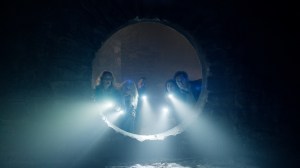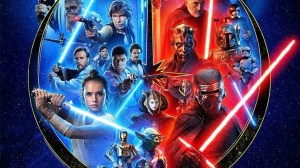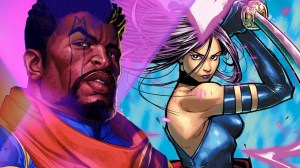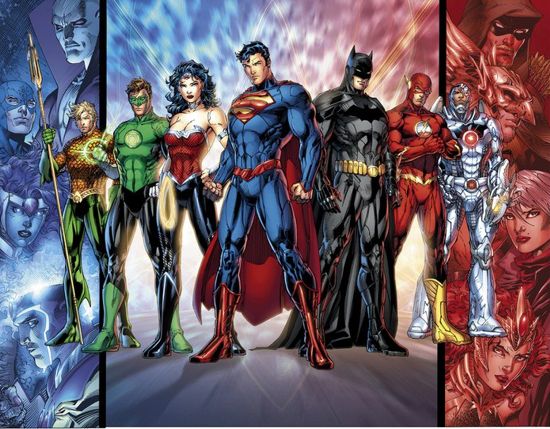
Hey…I just started getting into comics. I went to my local store and honestly it was overwhelming with the sheer amount of comic books. Where do I start?

Videos by ComicBook.com
We’ve already talked about some of the great jumping-on points for characters like Batman, Spider-Man and Superman…but the nature of this undertaking (we put together a list of about 100 stories) is such that doing them all in one shot would have turned into white noise.
You can see the previous entry here.
For the sake of convenience, we’ve decided to break down our suggestions into one or two per character or title, going in more or less random order of how they occur to us. We’ll talk mostly about trade paperbacks and other collected editions, although in some cases where there’s a free or cheap issue we may insert a link there.
This is by no means meant to be a complete list; we’ve got another couple of stories like this coming over the next week or so and if the stories are popular we’ll do more down the line (becuase I had started out with the idea that we’d do one per character and 25 total, only to end up with several options per character and so fairly poor representation for the variety of titles on the market). Because of the nature of both the question and the story itself, we’ve decided to go with mostly mainstream superheroes and then a few books that we cover regularly, that our readers like or that I think are good “entry points” into comics. It’s all fairly subjective, and we encourage our readers to leave their own questions, comments, corrections or suggestions in the comments thread.
Iron Man
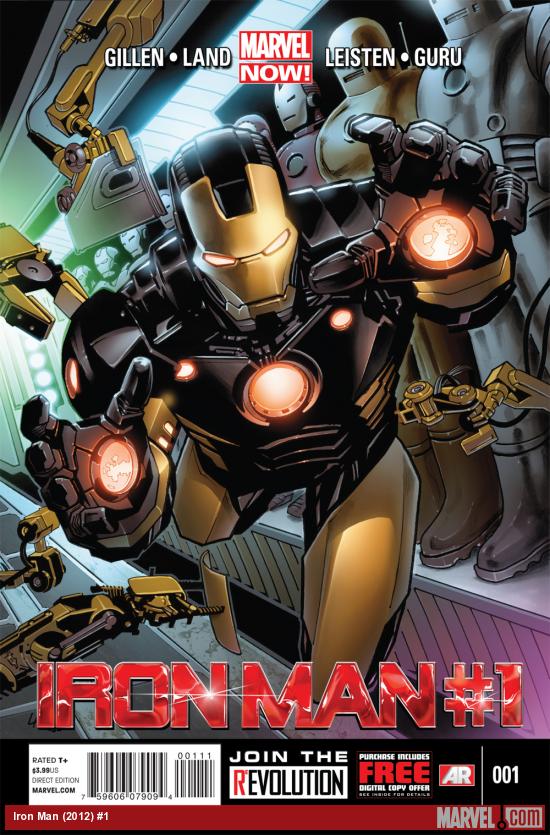
Classic Bronze Age tales like “Demon in a Bottle” are no doubt key to his development, but they’re mired in characters and concepts that are no longer relevant to Tony, and if that was your “in,” you’d want to just keep right on reading through the ’70s and ’80s rather than jump into the monthlies.
Matt Fraction’s Iron Man run has been collected in a number of volumes, and is arguably the best jumping-on point in recent memory. There’s even Omnibus collections if you’re really ambitious.
Of particular note is The Invincible Iron Man Annual #1, which dealt with The Mandarin attempting to create a propaganda film that cleared his name of past misdeeds. As much as Iron Man, we had a hero in the form of the documentarian who was fighting for the truth. It’s an interesting counterpoint to All Hail the King, the Mandarin-centric Marvel One-Shot short film attached to the Thor: The Dark World Blu-ray.
Not quite as good as Fraction’s, but a solid read and an organic jumping-on point, is the recently-launched Marvel NOW! Iron Man series. This, of course, is going to be the case for most Marvel titles…but Kieron Gillen and Greg Land’s Iron Man Volume 1: Believe is pretty good stuff, and it ties closely into what was going on in Iron Man 3 that casual fans should be able to wander right in.
Also worth a mention: The Armor Wars. Not really an in to current continuity, but it’s a more contemporary Tony and one that started to really see him deal with some of the kinds of issues he deals with regularly and that we see in the movies. It’s a fun, dumb story that turned out to be kind of an unexpected status quo-setter.
Justice League
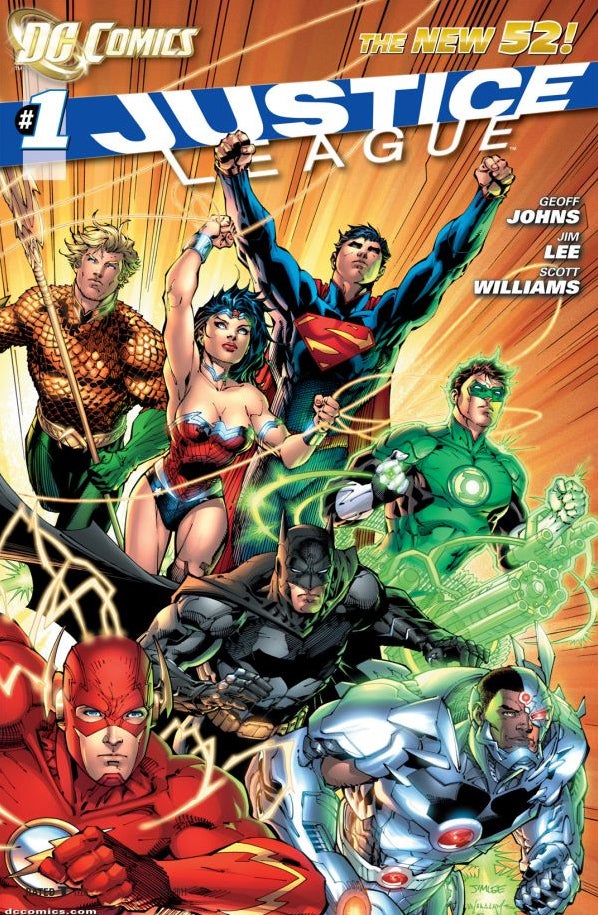
There are a lot of books that are objectively good, but which don’t actually “exist” in continuity anymore. That means as a jumping-on point, for instance, the Giffen/DeMatteis Justice League is a terrible idea. But if you like yourself, and want joy in your life, you should buy them.
The obvious one, since the launch of the New 52, is Justice League: Origin by Geoff Johns and Jim Lee. It’s a solid, modern retelling of the League’s first meeting and it inspired the Justice League: War animated film and will likely play a big role in inspiring the Justice League live-action feature.
There’s been plenty of Justice League tie-in books since the New 52 launched, but frankly most of them are based on peripheral characters and not particualrly new-reader friendly unless you know you’re going to like a particular character or theme. If so, by all means: the first trades of both Justice League Dark and Justice League International are quite good and easy to follow, but they won’t really illuminate the DC Universe for you and in the case of Dark, the series really got kind of reinvented when Volume 3 hit.
In spite of the fact that it doesn’t “count,” Grant Morrison’s first volume of JLA still holds up and gives a sense for the characters that’s hard to match…although Mark Waid’s JLA: Year One gives it a run for its money.
And, of course, there’s Waid’s JLA: Tower of Babel, which is way deep in old-school DCU continuity but still manages to remain relevant because Geoff Johns loves to mine themes from it in his Batman and JLA stories.
Avengers
Just for a laugh, let’s start with Linkara’s recent review of Avengers #200. Clearly it’s not a book that needs to be read, but…well…
So, anyway. That’s fun. But…Avengers!
I would actually not recommend Jonathan Hickman’s current Avengers as a particularly accessible way in for new readers. Hickman wouldn’t, either, I don’t think. It’s not an easy read and his Avengers is as out there as just about anything he’s done.
Brian Michael Bendis and Kelly Sue DeConnick both have a trade paperback of Avengers Assemble under their belts which would be great entry points, with Bendis’s tying the Avengers to the Guardians of the Galaxy and the larger Marvel Universe while DeConnick’s is largely done-in-one or a few stories that inform the heroes’ backstories — an important thing to do in team books when you get a chance, since so many heroes can’t support solo titles in today’s market.
DeConnick’s Science Bros is my personal favorite volume of that series, but your mileage may vary. In any event, it’s designed to be a way in, and it succeeds…at least for those first two books before it started getting tied into wacky crossovers.
JLA/Avengers is a fun little orgy of comics crossover insanity, and for the most part because of the great creators involved the characters are actually handled well. It’s a recommended read, although a lot of characters will pop up who you’ll probably never see again, or at least not for a long time, if you’re a new reader.
Avengers vs. X-Men is pretty much indispensible for today’s Marvel readers, since it kicked off the mountain of crap that, among other things, led to Uncanny Avengers, the first volume of which is a cautiously recommended read (it’s pretty accessible but not the best representation of some of the characters).
Green Lantern
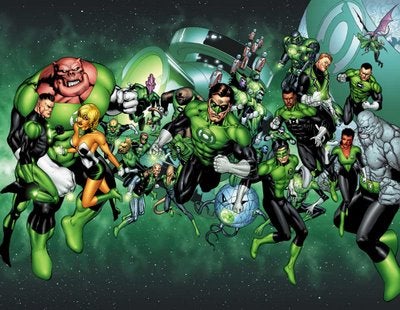
Not only did he craft a whole new mythology for the character, and not only did he do it in a way that really endeared him to the fan base, but he is, almost certainly, the most celebrated Green Lantern writer of all time, and since his stories were all grandfathered into continuity when the reboot happened, it means his whole run is basically worth a read and it will actually “count.”
Green Lantern: Rebirth is the volume you want to start with, although it’s not my favorite. Starting with The Sinestro Corps War, the title just exploded and the New 52 volumes are actually a great, fresh reboot in spite of the fact that the book didn’t really reboot much. The first of those is just called Green Lantern: Sinestro. If you start with that and keep reading, you can make the call whether to keep going when the new creative teams take over.
While it doesn’t really “count” anymore, it’s absolutely worth reading the Dennis O’Neil/Neal Adams Green Lantern/Green Arrow material. It helped to establish the baseline personalities for the pair for years to come and a lot of that still carries over, even though the stories didn’t happen and the pair aren’t really friends yet in the New 52.
In preparation for the upcoming movie, it’s probably worth grabbing the X-Men vs. Apocalypse collection and at least browsing the Age of Apocalypse, since that story is pretty excellent even if it’s a terrible jumping-on point, being an alternate reality and all.
X-Men vs. Apocalypse, though, is pretty key reading for that character and does matter in this universe.
Avengers vs. X-Men applies here, especially as it leads into not just Uncanny Avengers but also All-New X-Men and Brian Bendis’s new Uncanny X-Men Volume 1, both of which are fantastic books and great, easy-to-grasp jumping-on points.
There are a number of great, classic X-Men stories. Probably the easiest way to go is to just jump on board with X-Men Visionaries: Chris Claremont and John Byrne. Basically any of those books will do right by you.
Marvel Universe
Civil War has never been a favorite of mine, but it’s easy to understand and it was the key jumping-off point for all of the insanity that has followed, from Ed Brubaker’s Captain America to Avengers vs. X-Men.
Rick Remender’s Uncanny X-Force run, currently hitting in Omnibus editions, is brilliant. Read it.
Similarly, the Deadpool by Joe Kelly Omnibus, or any of the collected editions that it includes, are great stuff, and they redefined a fairly generic character to be that wacky character so many people adore.
DC Universe
Back to the same old problem: NOTHING MATTERS ANYMORE becuase things have been tossed around so much.
But the previous volumes of Booster Gold could turn out to be important: the character came back after Flashpoint remembering the past. There’s a handful of Booster Gold volumes, plus World of Flashpoint Presents Superman.
Speaking of which, you should read Flashpoint. For an event series, it’s surprisingly good; while the characters are all butchered and turned around, it did give a primer on all fo them and you can glean a lot about the “standard” versions of the characters from the changes made…and it explains the birth of the New 52-verse in a way that’s important if you decide you like Justice League and want to read something like Trinity War.
All-Star Western is one of the best books of the New 52, and the Jonah Hex stories from Jimmy Palmiotti, Justin Gray and company have LONG been some of DC’s best books. He doesn’t “matter” much to the big picture since he’s a Western hero who lives in the past, but it’s a great book and ANY volume is easy enough to jump in.

